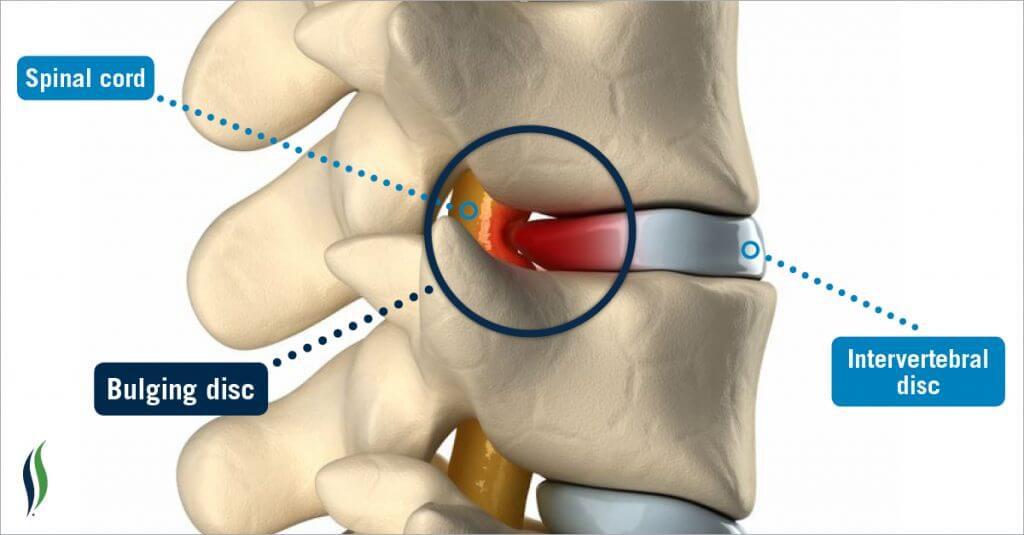A lumbar disc bulge (also known as a herniated disc) is a tear in the disc which separates the lower back spinal bones causing severe lower back pain. People who suffer from this injury are most common around 20 to 50 years old and are mostly affected at the lowest disc in L4/L5 and L5/S1.
Lumbar Disc Bulge

What is Lumbar Disc Bulge?
What Causes It?
A lumbar disc bulge gradually occurs when you stay in the same position for a long time. Gradual injury can happen when you are sitting down with a bad posture, bending forward without squatting or twisting while lifting an object.
A disc bulge can also happen suddenly after an injury during a motor accident, after making sudden movements or gaining weight quickly.
Risk factors include:
- Poor Posture
- Weak Back/Stomach Muscles
- Being Overweight Or Obese
- Repeated Lifting, Sitting Or Bend With A Poor Posture.
Symptoms
Here are some of the common symptoms of a lumbar disc bulge:
- Lower back pain.
- Back stiffness in the morning which improves with movement.
- Pain radiating one or both legs.
- Pins and needles in the leg.
- Muscle spasm.
- Weakness in the leg.
- Worse pain when leaning forward, backward or sideways.
- Worse pain after sitting, standing or walking for a long time.
Diagnosis
- You will be asked about your symptoms and how they started. Other questions will include those to eliminate other injury/disease.
- A physiotherapist/ chiropractor will look at your posture, movement in your back and strength of the muscles. Other simple tests will look at the cause of numbness (if appropriate).
These steps can accurately diagnose a lumbar disc bulge. However, scans such as an MRI or CT scan may confirm the diagnosis.
Treatment
- Pain medication by your doctor.
- Physiotherapy/ Chiropractor
- Correct your posture
- Education to manage pain and flare-ups
- Gentle massage
- Nerve flossing
- Stretches
- Strengthening exercises
- Surgery (last resort)

Tips And Tricks For Managing Daily Activities
- Use proper lifting techniques (use your legs, not your back)
- Keep moving within pain limits
- Adjust your desk, car seat or work station ergonomics
- Avoid heavy lifting/twisting movements
- Avoid prolonged sitting/standing
- Avoid aggravating movements and activities
- Take regular breaks after sitting for long periods (watching TV, using a computer or working at a desk).
How Long Until I Get Better?
Symptoms are expected to improve after 6-8 weeks of physiotherapy/ chiropractic treatment depending on individual lifestyle activities. However, physical therapy does not cure the condition as lower back pain can flare-up again. Patients will learn to manage their condition by advice from physical therapist and personalised lifestyle modification.
Take Home Message
- A lumbar disc bulge is a common condition in young and older people that causes severe lower back pain.
- Everyday activities contribute to a lumbar disc bulge.
- A good posture helps prevent/delay a lumbar disc bulge.
- You can manage your symptoms quickly if you get early treatment.
For all your lumbar disc bulge needs, feel free to give us a call on 02 9793 8840 or Book Online

New Client Offer - 10% OFF
Are you in pain? Not sure if we can help you?
Book your initial appointment and receive 10% off any service!